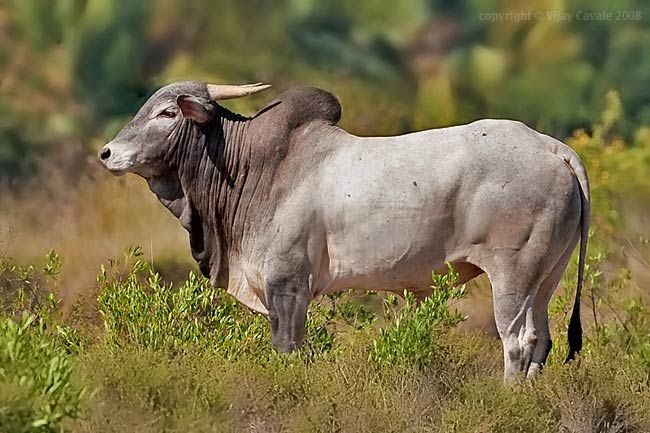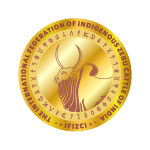Indian breeds and cattle varieties have played a crucial role in agriculture and ecology worldwide and in the lives of Indian people. They are of sacred importance and are essential in our daily lives and society. Cattle breeds are significant to the Indian people because of their unique characteristics.
Read Also: importance of cows in agriculture

Here’s a look at some important facts about 3 diverse cattle varieties known for their characteristics:
1. Dairy Breeds of Cattle in India:
These cattle are raised especially to produce milk. A good dairy cow has several characteristics. It should have four long, big, and positioned correctly teats, as well as a well-formed, suspended udder.
Dairy cows should have large hindquarters and short chests, known as a wedge form. They should also produce a lot of milk, however, this might vary according to the animal’s age, breed, and diet.
There is the most important of dairy breeds of cattle in India:
1. Sahiwal:
Originally from Pakistan in South Asia, the Sahiwal cow breed was employed for both milk production and drag power.
- Reddish-dun or light crimson, it frequently has white flecks mixed throughout.
- The horns are around 3 inches long and stumpy.
- Males have a huge hump and a thick, heavy dewlap. In men, the sheath is likewise pendulous.
- With a black switch that nearly reaches the ground, the tail is long and delicate.
- The Jamaica Hope is a cow breed that is being developed by this Indian breed.

2. Red Sindhi Cattle
Originating in Pakistan’s Sindh district, the Red Sindhi is a rare cow breed that is also well-liked in India and other tropical countries.
- Along with white stripes, the color is red in a range of mild to dark tones.
- Hornes are thick at the base, bend upward, and emerge laterally.
- Males have a well-developed hump.
- The udder is large and pendulous.
- Sahiwal’s light-colored muzzle contrasts with Red Sindhi’s dark-colored muzzle.
- The first calving occurs between 39 and 50 months of age, and the intercalving interval lasts between 425 and 540 days.

3. Gir Cattle
One of the oldest and most well-liked native cattle breeds in India, Gir cattle are native to Gujarat’s Gir Forest area.
- Their foreheads are large and convex.
- Like a leaf, the long, pendulous ears are folded and have a notch at the top.
- Horns have a “half-moon” look due to their unusual curvature and many internal rotations.
- The tail is sufficiently long and whip-like.
- Brazil and the United States are among the countries that have imported this breed of cattle from India.
- Gir and Kankrej were crossed to create the new breed known as Indu-Brasil in Brazil.
- 45–54 months is the age of first calving, while 515–600 days is the interval between calvings.

2. Drought Breeds of Cattle in India
In many areas of India, farmers face problems in corps for irrigation. That’s why these types of cattle are used for farm labor and transportation purposes because of their efficiency, flexibility, and durability.
They should have broad rumps, be frequently bred, and have substantial muscles. Short legs and long wide backs are desired, as is rapid development and weight increase.
The different types of cattle in India used for drought purposes are:
1. Amrit Mahal Cattle
Native to the Mysore district of Karnataka, India, Amrit Mahal cattle are highly valued for their resilience, vigor, and historical significance.
- These Indian cow breeds are grey, however, their coloring ranges from white to almost black.
- It has a long head. There is a furrow in the center of the thin, protruding forehead.
- They have long horns.
- For the purpose of creating this Indian cow breed, the Maharajas of Mysore established expansive estates known as Kavals.
- They resemble the Hallikar breed quite a bit.

2. Hallikar Cattle
Southern India’s native Hallikar cow breed is renowned for its sturdiness, vigor, and contribution to traditional farming.
- In South India, this Indian cow breed is thought to be among the greatest draught breeds.
- Gray to dark gray is how they seem.
- broad forehead with a middle furrow.
- The animal is modest in size, muscular, and compact.
- Possess a lengthy face that resembles a coffin.
- Near the top of the poll, long horns appear close to one another.
- The legs are robust, and the body is muscular.
- In India, these cow breeds are renowned for their ability to withstand drought and to trot.

3. Khillari Cattle
Native to India, khillari cattle are mostly found in the states of Karnataka and Maharashtra. The historic agricultural settlement known as “Khillar,” which is famed for producing these animals, is the source of the breed’s name.
- Cattle of a swift and strong draught breed.
- White with a greyish tint.
- Their foreheads are swollen and their faces are long. The face is formed like a coffin.
- Long, pointed horns that turn forward after first bending backward.
- Rapid pace.

3. Exotic Breeds of Cattle in India
The following are important facts regarding exotic cow breeds, which are non-native varieties introduced to various areas to improve economic gains, production, and genetics:
1. Jersey Cattle
The Isle of Jersey, which lies in the English Channel between England and France, is the birthplace of Jersey cattle.
- Various types of dairy cow that are smallest.
- Color: tan to cream.
- Their foreheads are short and dished.
- Horns of a moderate size.
- Milk yield: 4000-5000 kg throughout a 365-day lactation period.
- Content of milk fat: 5.4%

2. Holstein Friesian Cattle
The Friesland area, which is situated in northwest Germany and the northern Netherlands, is the birthplace of Holstein Friesian cattle.
- World’s largest producer of milk.
- White and black.
- Biggest breed of dairy.
- 6000–8000 kg of milk are produced every lactation.
- Content of milk fat: 3–3.5%

3. Brown Swiss Cattle
More than a thousand years ago, in the Canton of Graubünden, in the Alpine areas of Switzerland, brown Swiss cattle first appeared.
- Brown all over.
- The world’s second-largest producer of milk.
- Cattle that are big and hefty.
- 6000–7000 kg of milk are produced during each lactation.
- 4% milk fat

Conclusion
We can better understand the contribution breeds of cattle varieties make to global agricultural practices and food security when we are aware of their diversity. In their natural habitat, each of these cattle breeds has a specific function that supports regional agriculture, economies, and ways of life. Indian cattle breeds are comparatively inferior to foreign cattle breeds in terms of milk output and other advantageous traits related to dairy animals.


